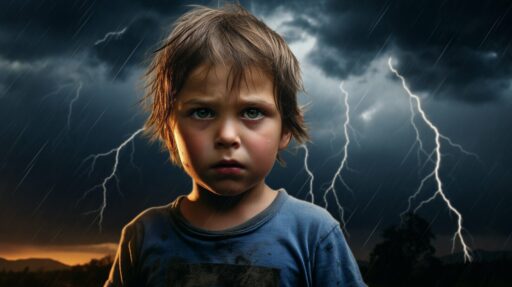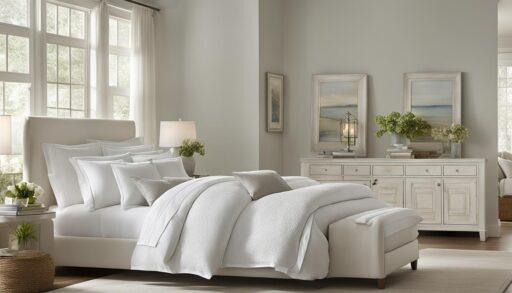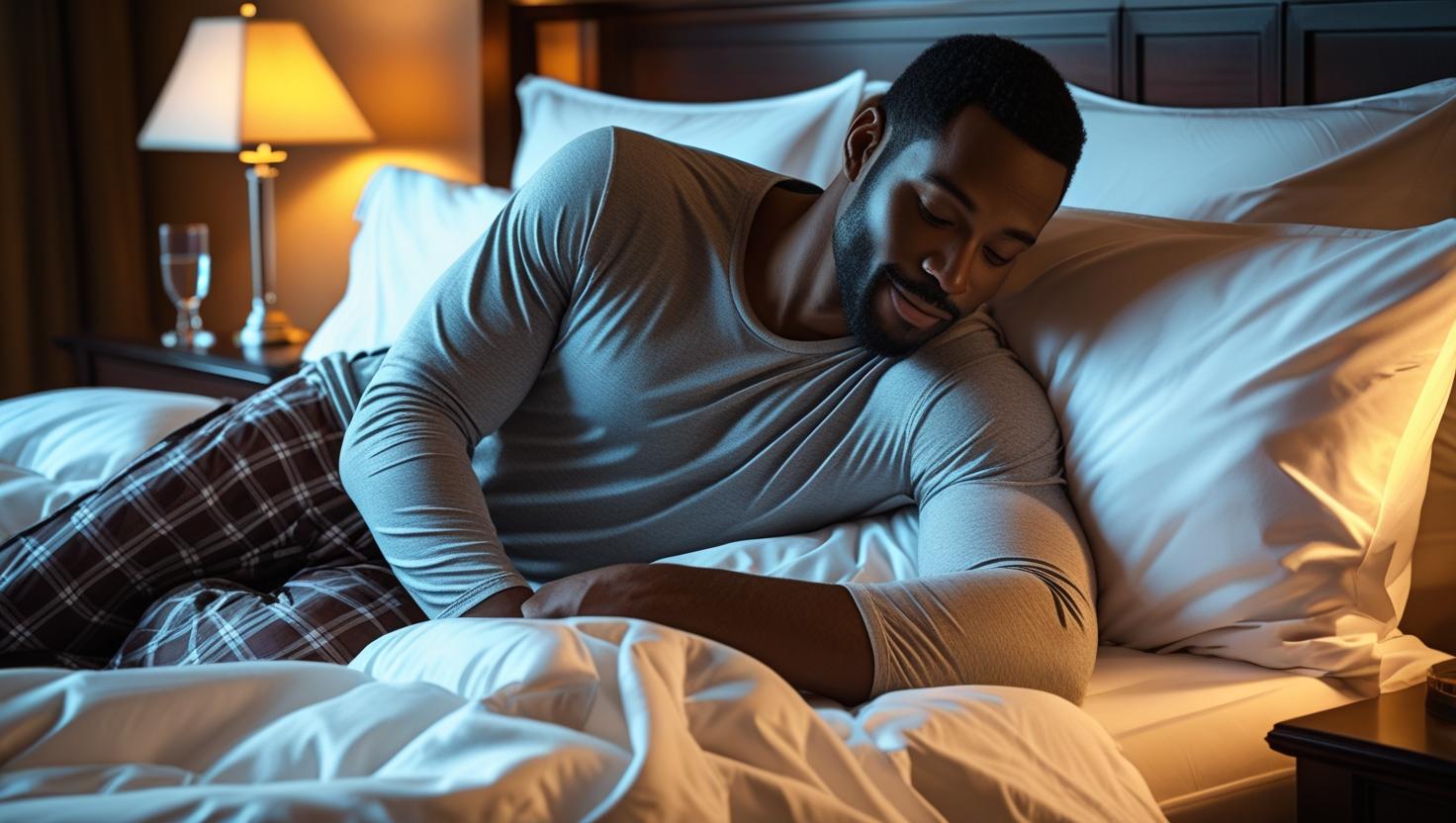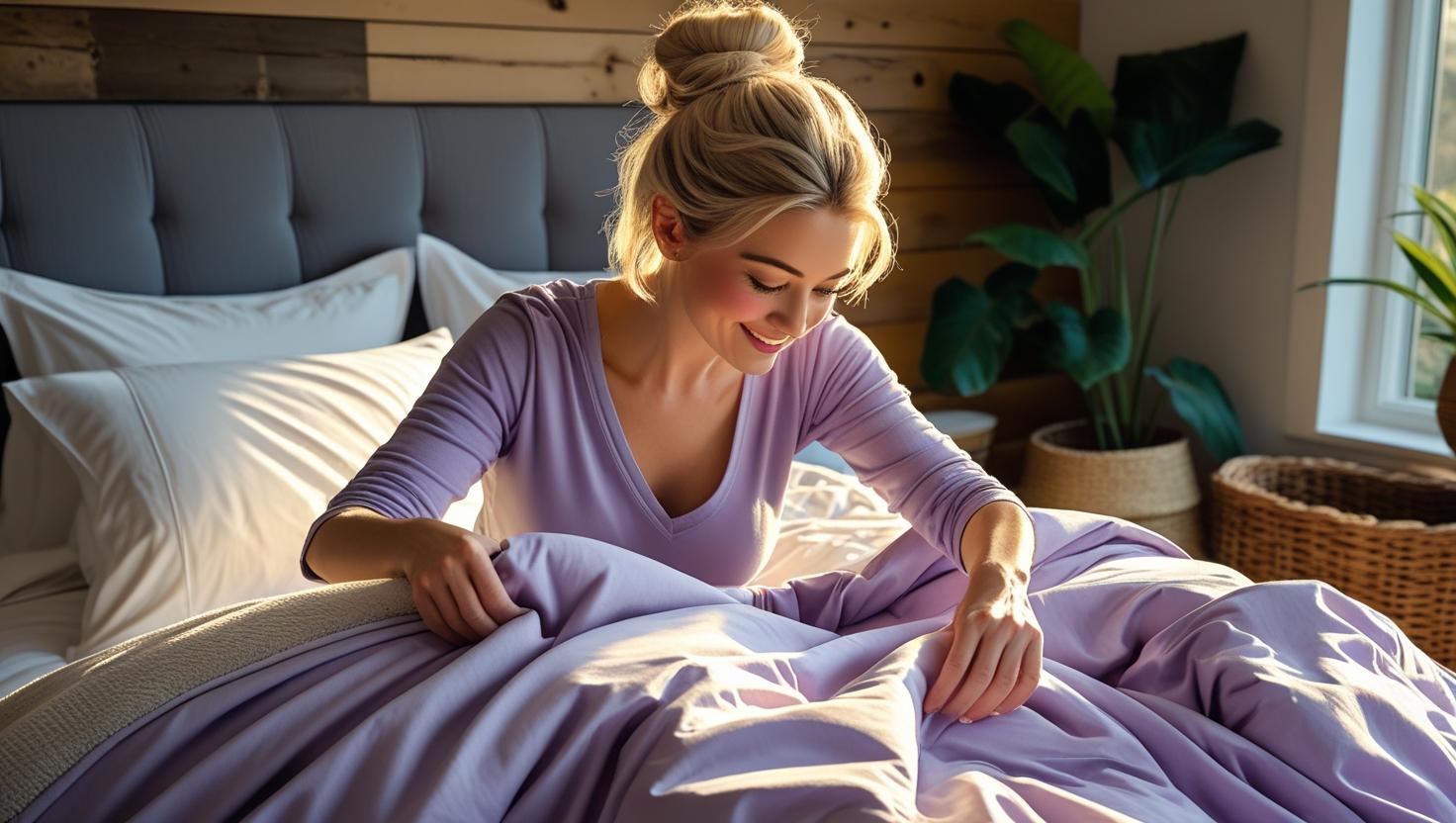Feng Shui Principles for Bedroom Layout

According to feng shui principles, the layout of your bedroom plays a crucial role in creating a harmonious and balanced energy. By implementing a few simple adjustments, you can transform your bedroom into a space of positive energy and tranquility. In this article, we will explore 15 essential tips for feng shui in your bedroom, including the arrangement of your bed, the importance of furniture placement, and the role of color and lighting. Discover how to optimize your bedroom layout for a restful and revitalizing space.
Key Takeaways:
- Arrange your bed in the commanding position for optimal energy flow.
- Adopt a less-is-more approach to create a clutter-free environment.
- Ensure you have a solid headboard and grounding rug for stability.
- Consider the role of mirrors and decor in enhancing the energy flow.
- Choose calming colors and adequate lighting for a peaceful atmosphere.
The Importance of Bedroom Layout in Feng Shui
The layout of your bedroom plays a crucial role in creating a harmonious and balanced energy that fosters positive vibes and promotes well-being. When designing your bedroom, it is important to consider the intention and purpose of the room, as well as the needs of the individuals who will be using it. By paying attention to furniture placement and following feng shui principles, you can create a harmonized space that promotes balance and harmony.
One of the key elements to consider in bedroom layout is the positioning of the bed. According to feng shui principles, the bed is the most important piece of furniture in the room. It should be placed in the commanding position, diagonally from the door, to avoid the “coffin position” and create a sense of safety and security. Symmetry and balance are also important, so make sure to have accessibility from each side of the bed.
In addition to bed placement, it is essential to consider the overall furniture arrangement in your bedroom. Avoid placing mirrors in direct sight-lines to the bed, as they can create disruptive energy and hinder restful sleep. Instead, place mirrors beside the bed, facing outward, to maintain functionality without reflecting the sleep space. This helps to create a serene and harmonious environment.
By paying attention to the layout of your bedroom and following feng shui principles, you can create a space that promotes positive energy, balance, and harmony. Remember to adapt these guidelines to your specific needs and preferences, allowing for flexibility and creativity in designing your ideal bedroom.

Table: Bedroom Layout Tips in Feng Shui
| Tip | Description |
|---|---|
| Position your bed in the commanding position | Diagonally from the door to create a sense of safety and security. |
| Avoid mirrors in direct sight-lines to the bed | Place mirrors beside the bed, facing outward, to maintain functionality without reflecting the sleep space. |
| Create symmetry and balance | Ensure accessibility from each side of the bed and maintain a balanced furniture arrangement. |
Furniture Placement and Bedside Tables in Feng Shui Bedroom Layout
Proper furniture placement is essential in a feng shui bedroom layout. The way you arrange your furniture can greatly impact the energy flow and create a peaceful bedroom environment. The focal point of the room should be the bed, positioned in the commanding position, which is diagonally from the door. This placement avoids the “coffin position” and creates a sense of safety and security.
To promote balance and harmony, it is recommended to have bedside tables on either side of the bed. This promotes symmetry and creates a harmonious space. The bedside tables should be of equal size and height to maintain balance. You can place a lamp on each bedside table to provide soft and soothing lighting for relaxation.
When choosing bedside tables, opt for ones that have storage space. This helps keep the bedroom clutter-free and allows you to store essential items within reach. Avoid placing too many items on the bedside tables to maintain a clean and calm environment. Minimalist decor and a few carefully selected items can enhance the overall feng shui energy in the room.
Feng Shui Bedroom Arrangement Tips:
- Position the bed in the commanding position, diagonally from the door.
- Place bedside tables on either side of the bed for symmetry and balance.
- Choose bedside tables with storage space to keep the room clutter-free.
- Avoid placing too many items on the bedside tables.

By implementing these feng shui principles in your bedroom layout, you can create a peaceful and harmonious environment that promotes rest and relaxation.
The Role of Mirrors and Decor in Feng Shui Bedroom Layout
In feng shui, mirrors are a topic of much discussion. When used correctly, mirrors can enhance the energy flow in a bedroom. However, it is important to be mindful of their placement. Avoid placing mirrors in direct line with the bed, as this can disrupt good quality sleep. Instead, position mirrors beside the bed, facing outwards. This allows for functionality without reflecting the sleep space, promoting a peaceful and restful atmosphere. By incorporating mirrors into your bedroom decor in this way, you can optimize the energy flow in the room.
“Mirrors are like portals, and when you are trying to sleep, you want to keep that energy contained within your own space.” – Feng Shui Expert
When it comes to decor, the placement of personal items and artwork can have an impact on the overall energy of the room. In feng shui, it is recommended to place these items in the far right corner of the room. This is known as the “relationship corner” and is believed to positively influence love and relationships. Avoid hanging art directly above the bed, as it can create a heavy or oppressive energy. Instead, consider placing a piece of uplifting artwork on the wall opposite the bed, creating a visually appealing focal point in the room.
Table: Feng Shui Decor and Placement Guidelines
| Decor Item | Placement |
|---|---|
| Mirrors | Beside the bed, facing outwards |
| Personal items and artwork | Far right corner of the room |
| Artwork above the bed | Avoid |
| Uplifting artwork | Wall opposite the bed |
By following these guidelines, you can create a visually pleasing and energetically balanced bedroom environment. Remember, feng shui is all about creating harmony and positive energy flow, so be mindful of how you arrange your mirrors and decor to optimize the overall energy in your bedroom.
Feng Shui Bedroom Colors: Creating a Sacred and Sensual Space
When it comes to creating a harmonious and balanced feng shui bedroom, the choice of color plays a significant role in setting the right atmosphere. The colors you choose can influence the energy flow in the space and contribute to creating a sacred and sensual environment for rest and relaxation.
In feng shui, neutral and earthy tones are often recommended for the overall color scheme of the bedroom. Beiges, creams, and soft earthy hues promote a sense of calmness and tranquility. These colors provide a soothing backdrop that allows the mind and body to unwind after a long day. Cool blues and pale greens can also be used to evoke a sense of serenity and rejuvenation, making them perfect for creating a peaceful atmosphere in the bedroom.
To enhance the energy of love and relationships in the bedroom, you can incorporate small doses of color through accessories. Pinks, reds, and whites symbolize partnership energy and can be added in the form of throw pillows, curtains, or artwork. These splashes of color not only add visual interest but also stimulate the loving energy within the space.
Remember, the most important factor in choosing bedroom colors is your personal preference. Select colors that you love and are drawn to, as they will contribute to creating an inviting and sacred space that resonates with your individual energy.
The Role of Plants in Feng Shui Bedroom Layout
Feng shui practitioners have differing opinions on the presence of plants in the bedroom. While some believe that living green plants add vibrant life energy to the space, others advise against having too many plants as they can be too energetically stimulating for restful sleep. The key is to strike the right balance and choose plants that align with the specific needs of your bedroom environment.
Having one or two plants in the bedroom can help purify the air, create a calming atmosphere, and bring a touch of nature indoors. When selecting plants, consider their light, heat, and humidity requirements and ensure they match the conditions of your bedroom. For those who prefer low-maintenance options, hard-to-kill plants like pothos can be a great choice.
It’s important to note that placement is crucial when incorporating plants into your feng shui bedroom layout. Avoid turning the bedroom into a jungle by having too many plants, which can lead to an overwhelming and cluttered energy. Instead, strategically position the plants in areas that promote balance and harmony. Placing them near windows or in corners can enhance the flow of chi and contribute to a soothing and natural ambiance.

Suggested Feng Shui Bedroom Plants
| Plant | Benefits |
|---|---|
| Lavender | Promotes relaxation and sleep |
| Snake Plant (Sansevieria) | Improves air quality |
| Peace Lily | Filters toxins from the air |
| Bamboo Palm | Enhances tranquility and calmness |
| English Ivy | Reduces airborne mold |
By carefully selecting and placing plants in your feng shui bedroom, you can harness their positive energy while maintaining a balanced and restful environment.
Furniture Size and Placement in Feng Shui Bedroom Layout
In feng shui bedroom layout, the size and placement of furniture play a crucial role in creating a harmonious and balanced space. By considering the principles of feng shui, you can optimize the energy flow and create room for partners to foster harmonious relationships.
When it comes to choosing a bed, it is recommended to invest in the largest bed that your bedroom can accommodate. A spacious bed allows for the smooth circulation of chi, promoting a sense of comfort and relaxation. However, it is important to be mindful when selecting a king-sized bed, as it should not require a split box spring. This ensures that the connection and harmony between partners remain intact.
In addition to the size of the bed, the placement is equally important. It is advisable to leave adequate space on both sides of the bed to balance the yin and yang energy in the room. This creates a sense of equality and promotes harmonious relationships. By following these guidelines for furniture size and placement, you can optimize the energy flow and contribute to a balanced and harmonious feng shui bedroom layout.
Creating Space for Partners
When designing your feng shui bedroom layout, it is essential to prioritize creating space for partners. This not only refers to physical space but also encompasses emotional and energetic space. By incorporating a spacious bed and leaving room on both sides, you allow for a sense of equality and balance between partners.
Furthermore, maintaining a clutter-free environment in the bedroom is crucial for creating space for partners. By decluttering and organizing the space, you create room for emotional connection and intimacy. A peaceful and uncluttered bedroom environment promotes restful sleep and allows for a deeper connection with your partner.
Remember, the goal of feng shui bedroom layout is to create a harmonious and balanced space that supports positive energy and well-being. By carefully considering the size and placement of furniture, you can optimize the energy flow and create space for partners, fostering harmonious relationships in your feng shui bedroom.
Creating a Clutter-Free Environment in Feng Shui Bedroom Layout
In a feng shui bedroom layout, maintaining a clutter-free environment is essential for promoting a restful feeling and optimal energy flow. Clutter can disrupt the flow of chi and create a sense of chaos in the space. By keeping your bedroom organized and free of unnecessary items, you can create a peaceful and harmonious atmosphere that promotes restful sleep.
To maintain a clutter-free environment, it is important to avoid storing items under the bed. This prevents the energy from freely circulating and can interfere with the quality of sleep. Instead, consider utilizing closed-off storage solutions such as dressers, closets, or storage ottomans to conceal clutter and create a visually clean space.
When it comes to storage, it’s important to be selective and intentional. Keep sleep-related items such as linens and pillows stored neatly to maintain a peaceful ambiance. Avoid storing books, exercise equipment, or any items unrelated to sleep in the bedroom as they can create mental clutter and disrupt the overall energy of the space.
Benefits of a clutter-free bedroom: |
|---|
|
“A clutter-free environment promotes a clutter-free mind. By eliminating physical clutter in your bedroom, you create a space that supports peace, tranquility, and restful sleep.”
Feng Shui Bedroom Architecture: Creating a Peaceful Sleep Space
When designing a feng shui bedroom layout, it is important to consider the impact of architectural features on the overall energy and atmosphere of the space. Certain architectural elements, such as beams, sloped ceilings, and ceiling fans, can create oppressive energy and disrupt the peacefulness of the sleep environment. To create a tranquil and harmonious sleep space, it is advisable to avoid placing the bed directly beneath these features.
If relocation is not possible, there are alternative solutions to minimize the negative effects of these architectural features. One option is to conceal the feature with fabric or curtains that blend seamlessly with the room’s color scheme. This helps to visually soften the impact of the feature and create a more soothing environment. Another option is to incorporate lighting fixtures or artworks that draw attention away from the architectural feature, redirecting focus to more calming elements in the room.
Additionally, it is important to pay attention to the overall flow and feel of the bedroom space. Keep the room well-ventilated and ensure that natural light enters the room during the day, as this helps to promote a positive energy flow. Use curtains or blinds that can be easily adjusted to control the amount of light and maintain a peaceful ambiance during sleep hours. By considering the influence of architectural elements and creating a peaceful sleep space, you can enhance the overall feng shui of your bedroom.
| Architectural Feature | Solution |
|---|---|
| Beams | Conceal with fabric or curtains that blend with the room’s color scheme. |
| Sloped Ceilings | Use lighting fixtures or artworks to draw attention away from the sloped ceiling. |
| Ceiling Fans | Conceal with fabric or curtains, or opt for a ceiling fan with a low-profile design. |
By implementing these strategies, you can create a peaceful sleep space that supports the principles of feng shui and promotes restful sleep. Remember that every bedroom is unique, so it’s important to find solutions that align with your specific needs and preferences. With careful attention to the architectural features and overall layout of your bedroom, you can create a harmonious and tranquil environment that enhances your well-being.
The Role of Separating Work and Sleep in Feng Shui Bedroom Layout
Creating a designated space for work and sleep in your feng shui bedroom layout is crucial for maintaining a harmonious and restful environment. By separating these activities, you can ensure that the energy in your bedroom remains balanced and conducive to relaxation.
To achieve this separation, it is best to keep the office out of the bedroom entirely. The presence of a desk and work-related items can be too stimulating and disrupt the tranquility of the sleep space. However, if you must include a desk in your bedroom, there are techniques you can employ to designate separate spaces.
One effective approach is to use room dividers or screens to physically separate the work area from the sleep area. This creates a visual boundary and helps maintain a clear distinction between the two spaces. Another option is to position the desk in a corner or alcove that is not within direct sight of the bed, further minimizing the impact of work-related energy on your sleep.
Remember, the goal of feng shui is to create a restful and yin-focused environment in the bedroom. By designating separate spaces for work and sleep, you can ensure that each activity is given the attention it deserves, leading to improved productivity during the day and restful sleep at night.
Tips for Designating Separate Spaces in a Feng Shui Bedroom:
- Keep the office out of the bedroom entirely, if possible.
- If a desk must be included, use room dividers or screens to physically separate the work area.
- Position the desk in a corner or alcove that is not within direct sight of the bed.
- Avoid placing work-related items within the immediate vicinity of the sleep space.
By following these tips, you can create a clear separation between work and sleep in your feng shui bedroom layout, allowing for a more peaceful and harmonious environment.
Conclusion
By implementing the principles of feng shui in your bedroom layout, you can create a space that promotes positive energy and restful sleep. Start by arranging your bed in the commanding position, diagonally from the door, to establish a sense of safety and security. Consider the furniture placement and ensure symmetry and accessibility around the bed. Keep the environment clutter-free and store sleep-related items instead of having them under the bed.
Pay attention to the colors and lighting in your bedroom, choosing calming and relaxing hues for the overall color scheme. Add touches of color associated with partnership energy to enhance the space. Use mirrors strategically, avoiding direct reflection of the bed, and position artwork in the far right corner of the room. Finally, consider adding one or two plants, matching their needs to the bedroom conditions.
Remember that the size and placement of furniture play a role in creating a harmonious space. Invest in the largest bed your room can accommodate and provide enough space on both sides for a balanced energy flow. Designate separate areas for work and sleep, keeping the office out of the bedroom if possible.
By following these feng shui principles, you can transform your bedroom into a sanctuary that supports positive energy and restful sleep, contributing to your overall well-being and tranquility.
FAQ
What is the importance of bedroom layout in feng shui?
Bedroom layout plays a crucial role in fostering positive energy and promoting balance and harmony in the space.
How should furniture be placed in a feng shui bedroom layout?
The bed should be positioned in the commanding position, diagonally from the door for a sense of safety and security. Symmetry and accessibility from each side of the bed are also important.
Can I have mirrors in my feng shui bedroom layout?
It is recommended to avoid placing mirrors in direct line with the bed to promote good quality sleep. Instead, position them beside the bed, facing outwards.
What colors should I use in my feng shui bedroom?
Neutral, non-stimulating hues such as beiges, creams, and earthy tones are recommended. Cool blues and pale greens can also be used for rejuvenation and vitality.
Can I have plants in my feng shui bedroom layout?
Yes, but it is recommended to have one or two plants and avoid turning the bedroom into a jungle. Consider matching the lighting, heat, and humidity conditions with the specific needs of the plants.
How should I arrange furniture for a harmonious bedroom space?
It is advised to invest in the biggest bed the bedroom can accommodate, maintain balance, and leave adequate space on both sides of the bed.
How can I create a clutter-free environment in my feng shui bedroom layout?
Avoid storing items under the bed, keep sleep-related items in closed-off storage, and store books and exercise equipment in separate areas of the home.
What should I do about oppressive architectural features in my bedroom?
It is advised to avoid placing the bed beneath features such as beams, sloped ceilings, and ceiling fans. If relocation is not possible, conceal or blend them into the room’s color scheme.
Can I have a workspace in my feng shui bedroom layout?
It is ideal to keep the office out of the bedroom. If a desk must be included, efforts should be made to separate it from the sleep space using room dividers or other zoning techniques.
How can feng shui principles enhance my bedroom layout?
By implementing feng shui principles, you can enhance the flow of positive energy, promote restful sleep, and create a harmonious and balanced space.
Source Links
- https://www.thespruce.com/how-to-feng-shui-your-bedroom-1274334
- https://www.homesandgardens.com/interior-design/feng-shui-bedroom-layout
- https://www.mydomaine.com/feng-shui-bedroom-ideas-4767868




































